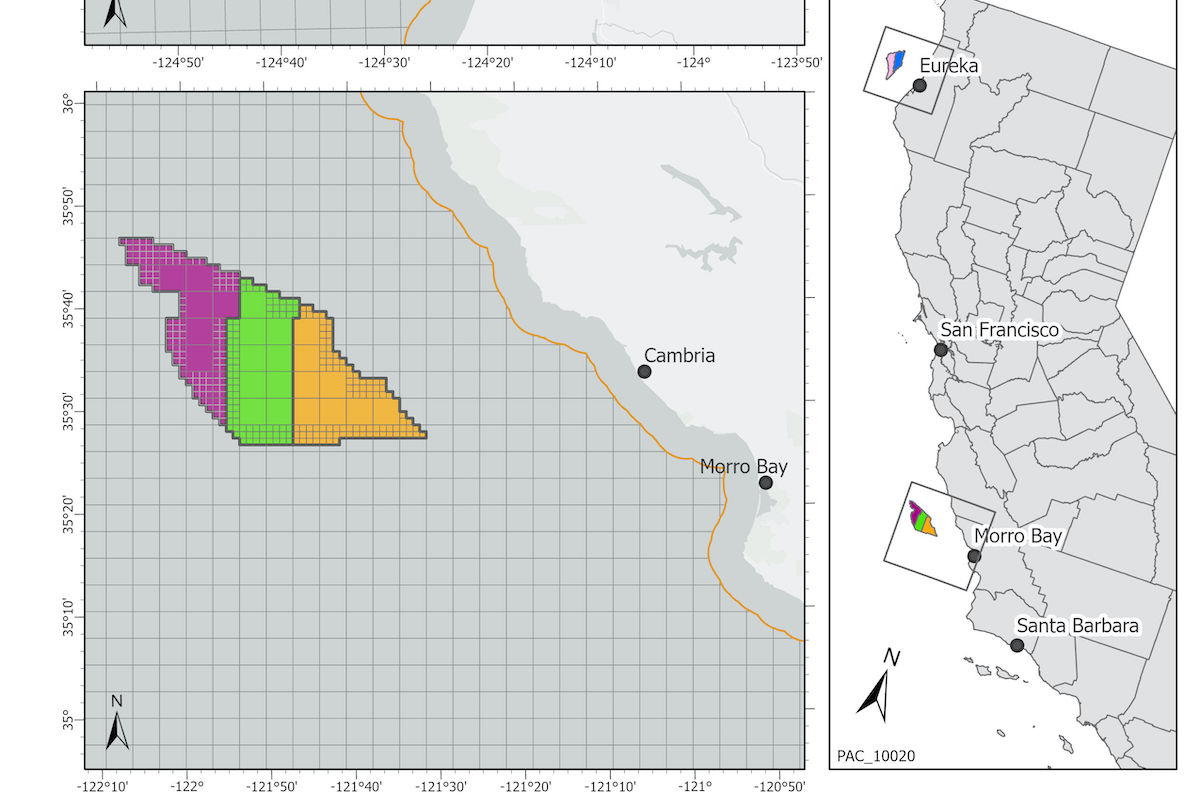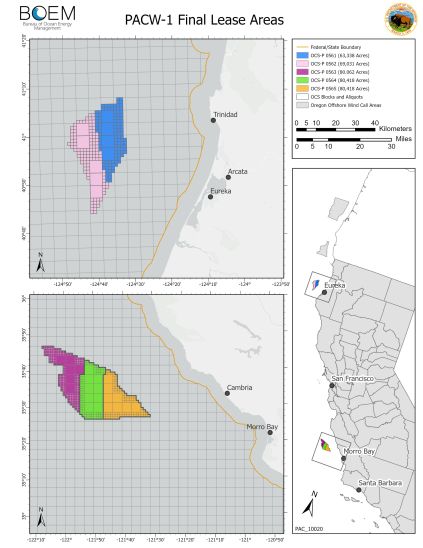Feds Set Date for Offshore-Wind-Energy Lease Sales
Three of the Five Areas Are off San Luis Obispo County

December 6 is the date to mark on the calendar if you were planning to buy a spot offshore on which to build a few megawatts of wind turbines. That’s when the country’s first lease sale for commercial-scale floating wind energy starts to take bids. Three of the five lease areas are off Cambria in San Luis Obispo County, with the remaining two off Eureka in Humboldt County. Together they represent 373,268 acres intended to create more than 4.5 gigawatts of electricity, which can power more than 1.5 million homes and support thousands of new jobs, the Interior Department announced in a press release on Tuesday. As well, they go toward the Biden administration’s green-energy goal of creating 15 gigawatts of floating offshore energy by 2035.
The wind energy deals are the product of the Offshore Wind Working Group convened by Congressmember Salud Carbajal, who represents S.L.O. and Santa Barbara, and Congressmember Jimmy Panetta of Carmel Valley, who is the son of former Secretary of Defense Leon Panetta. Since 2019, they’ve worked to pull together wind development off the California coast, notably reaching an agreement with the U.S. Navy, which was concerned the turbines would interfere with naval maneuvers and training.

Carbajal was pleased that the Central Coast is “leading the charge on our renewable energy transformation by becoming home to one of the first-ever offshore wind leases on the West Coast. Offshore wind holds incredible promise as a means to tackle climate change, and will serve our environmental, energy, national security, and economic prosperity goals for generations to come,” he said in a press statement.
Comments sent to the Bureau of Ocean Energy Management since the sale was announced on May 26 have added efforts toward union participation to project proposals, as well as required engagement with “Tribal governments, underserved communities, ocean users, and other stake holders.” What could be considered baseline environmental research was also conducted during the intervening time — determining no significant impacts — looking at the habitat and seafloor hazards, and mapping geological and biological characteristics.
The turbines are to float because the depth varies from 500 to about 1,200 feet in the lease areas. Other studies examined the proposed technology, different ways to moor the platforms in place, and possible turbine layouts.
Once the lease sale is held and actual projects fully laid out, more complete environmental analyses will be part of the permitting process. Full information on the California lease sales can be found at boem.gov/renewable-energy/state-activities/california.
Support the Santa Barbara Independent through a long-term or a single contribution.




You must be logged in to post a comment.